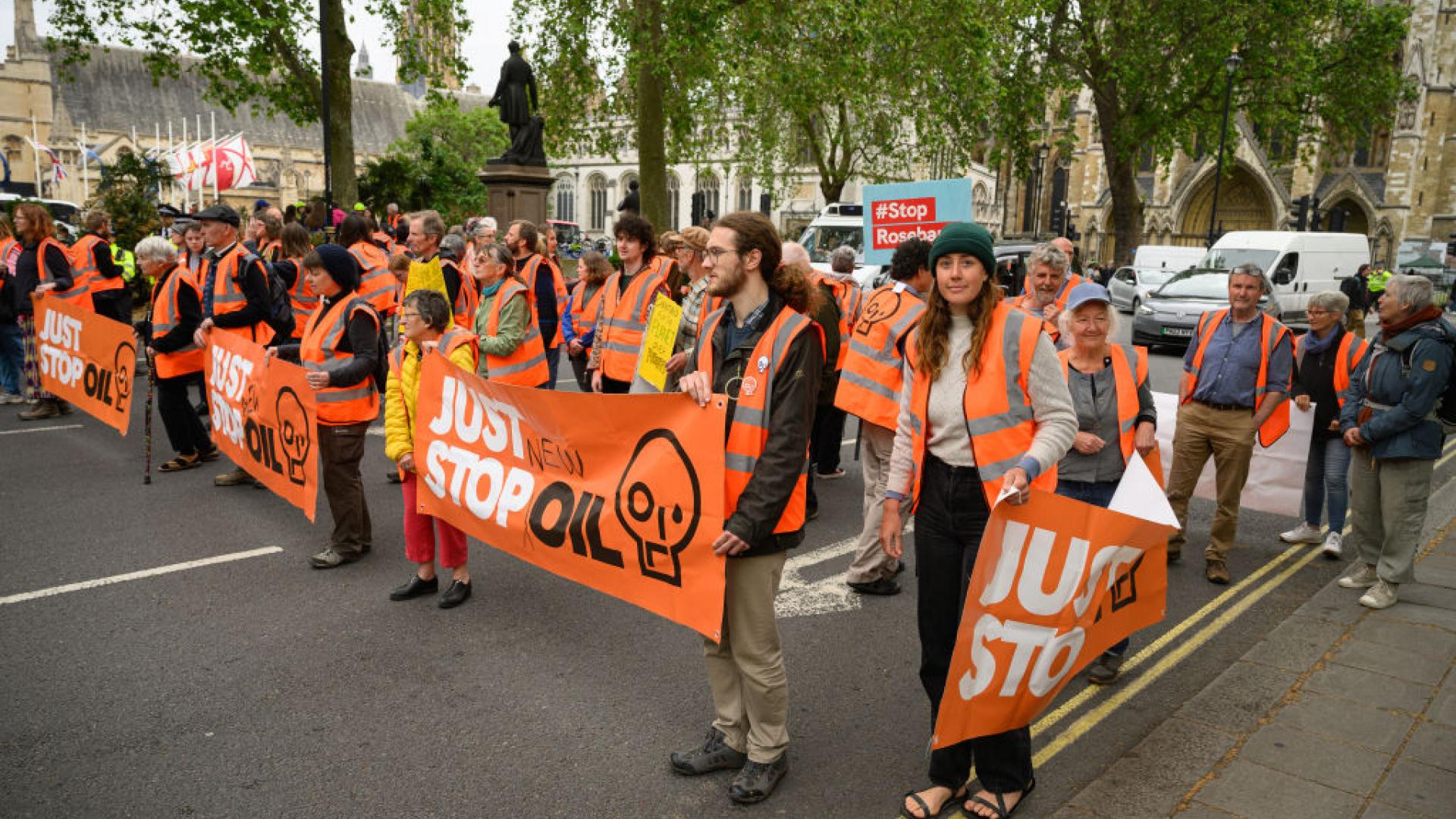Ben Roberts
We’re living through a time defined by urgent environmental challenges. As a research organisation, we’ve established that the public are increasingly seeing the effects of climate change on a local and global level, and that there is a widespread feeling of powerless among them. This is where direct action groups have emerged, and have done so with the intention of putting some measure of control into the hands of the public.
These groups have established themselves as disruptive forces demanding immediate change. For many people in the UK, Extinction Rebellion (XR) was one of the earlier and most visible groups advocating for greener policy. Starting in 2018, this group gained most of its notoriety after blocking London’s roads and bridges over the course of a month, earning them a lot of press.
Just Stop Oil, though founded earlier than XR in 2015, have only recently been recognised for their own brand of civil disobedience to the same degree. This group is comprised of prominent advocates for environmental preservation, but stands as an example of the complex dynamics at play when it comes to public awareness and support. But what does continued radical action mean for the charity sector – and what can be learned from these groups?
Tactics that Grab Attention
Direct action groups, including Just Stop Oil, employ a variety of tactics designed to improve public awareness. Protests, sit-ins, and public demonstrations are among their most visible strategies, aiming to disrupt the status quo and compel both the government and corporations to address environmental concerns. These tactics, designed to be as attention-grabbing as possible, have become social media and press wildfire. Our research shows that over just six months, awareness of Just Stop Oil has increased from only 37% of the public in January to 65% in July. This is an incredible level of growth for an organisation’s visibility in such a short timeframe.
Though charities may not wish to engage in the same tactics as direct-action groups, there are some lessons to be learned here. Just Stop Oil’s branding is characterised by boldness and an uncompromising stance. The group creates a sense of urgency, emphasizing the imminent threat posed by the fossil-fuel industry. Even their name is a straightforward demand for a complete halt to environmentally detrimental practices. This clarity of purpose resonates with people – and make them enormously memorable.
The Public's Mixed Response
Despite the heightened awareness that Just Stop Oil has achieved this year, there has been a notable decline in public support. Over the past six months, the proportion of the public in support of this group has dropped from 29% down to 24%. But how does a group with a clear message and increased visibility struggle to maintain backing? The answer is that they’re largely deemed to be annoying.
Direct action tactics are hugely polarising. While some members of the public might find them inspiring and celebrate the movement, others simply reject the ideology on the grounds that they are overly-confrontational, counterproductive, or that their actions aren’t relevant to their cause. Relationships between these activists and the wider public have been fraught. As someone with a pretty typical social media feed, I’ve been recommended more videos of these activists being forcibly moved, or even attacked, than I have of peaceful demonstration – and the sentiment is often massively anti direct action.
In addition, the public may perceives the group's message as uncompromising or overly radical. The media's role in shaping this public perception cannot be ignored, with coverage often highlighting the more sensational aspects of direct action, amplifying the discord and overshadowing the underlying goals. This can lead to a skewed representation of the group's intentions, further fuelling public scepticism.
The Connection to Charities
While this isn’t the first time we’ve spoken about direct action groups, our latest research has shown that public sentiment is evolving quickly around these issues. In March of this year, we launched our Good Cop, Bad Cop report which demonstrated an interesting link: an increase in awareness of activist activity also boosted support for environmental charities. Months later, and we’re seeing this connection being more widely acknowledged.
In this way, regardless of the reduced backing that direct action groups are receiving, the increase in visibility can be taken as a boon to the environmental charity sector. Direct action serves as a catalyst for conversations around environmental issues. The attention-grabbing tactics, even when met with resistance, thrust climate change into the forefront of public discourse. As discussions unfold and media coverage persists, individuals may find themselves seeking out more nuanced perspectives and alternative ways to contribute. This can lead to a surge in support for environmental charities and organisations that work to implement sustainable solutions, conduct research, and drive policy change.
For more information about our research with the public, consider downloading a briefing pack below.

